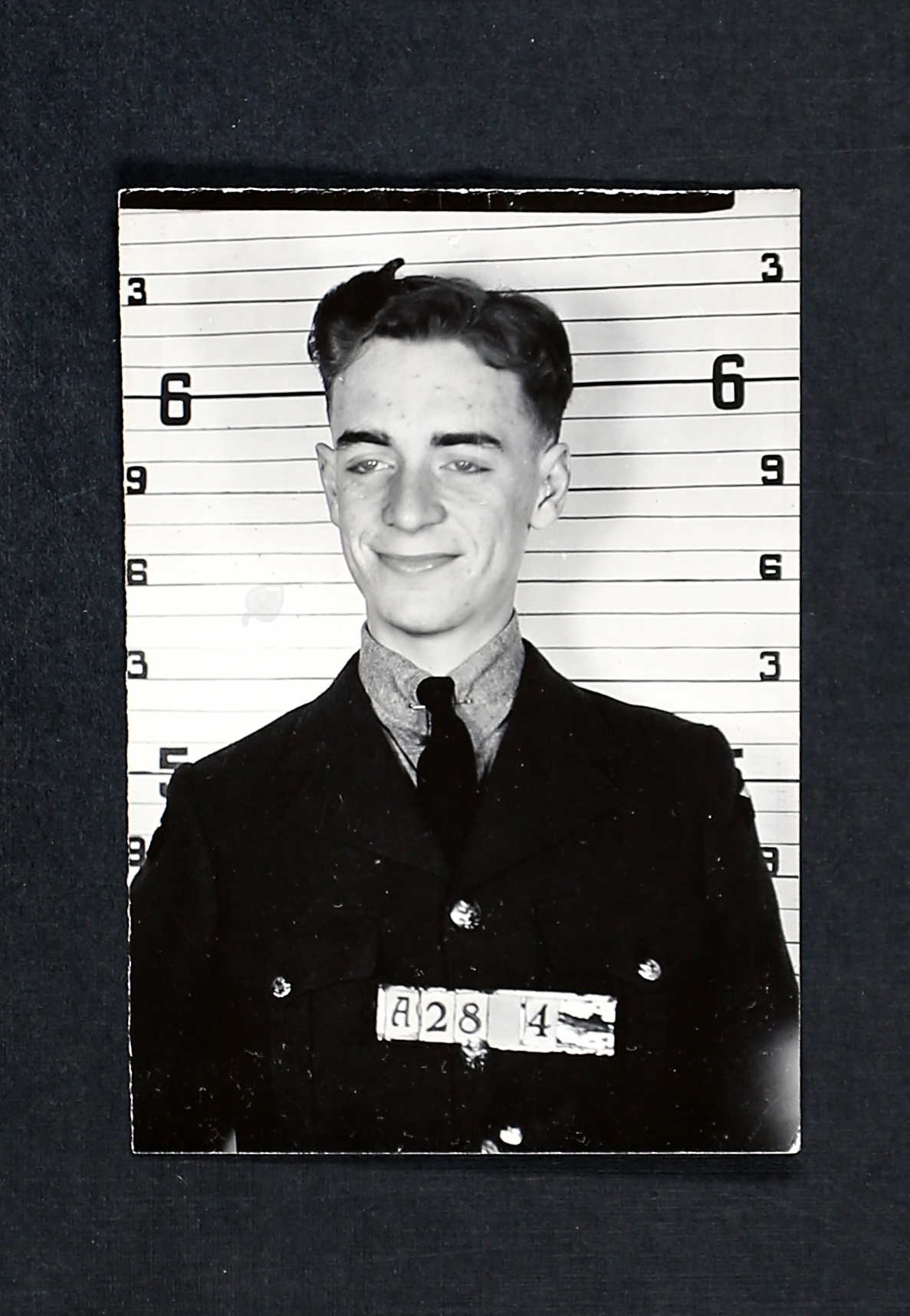

September 1, 1923 - January 14, 1943


Gordon Charles Bricker, born in Yorkton, Saskatchewan, was the son of Irwin Charles Bricker (1893-1945), postmaster, and Letitia Mary (nee Corry) Bricker (1897-1972) of Elora, Ontario. He had lived in Saskatchewan for one year before the family moved to Ontario. He had three sisters, Helen Elaine Herron (d. 2002), Annetta Agnes Bricker, and Jean Margaret Bricker, plus two brothers, James Gowdy Bricker (1927-2016) and David Corry Bricker (1929-1943). The family was Presbyterian.
Gordon was an unemployed student when he enlisted with the RCAF in March 1942. He had his junior matriculation, leaving school at age 18. He enjoyed hockey, skiing, toboganning, ping pong, baseball, and tennis. He smoked two cigarettes per day and indicated he did not drink alcohol. During his medical examination, his physique was considered slight and his mentality standard. He stood 6’ ½” tall and weighed 147 pounds. Acne was noted on his face as was atrophy of his left testicle. “Wiry, alert, average intelligence. Reason for joining Air Force: ‘I thought my education would count for more in the Air Force than with Navy or Army.’”
Gordon played the saxophone and clarinet.
His journey through the BCATP started in Toronto on April 14, 1942. He then was sent to No. 6 ITS, Toronto, August 2 until November 7, 1942. He then was sent to No. 1 AOS, Malton, Ontario.
On February 25, 1943, a Court of Inquiry was struck to investigate the missing Anson I 6739. Three witnesses were called to the Court of Inquiry held later in February 1943 to investigate.
The third witness, J. F. Copeland, Operations manager, Dominion Skyways, (Training) Limited, operating No. 1 AOS, Malton, Ontario stated that Anson aircraft 6739 was detailed to carry out a routine night navigation flight. The route was Malton to Brampton to Barrie to Newcastle to Tweed to Brampton and return to Malton. the recorded airborne time was 00: 30 on the 14th day of January 1943 and was last heard from wireless transmission at 01: 15 reporting over Barrie at 0100 hours at 3000 feet. at 05: 15 the aircraft was considered overdue and the RCAF was informed. A search was immediately started and carried out. The weather reported by other pilots on the flight indicated that there was broken cloud and good visibility but as they approached Lake Ontario where the overcast was solid and variable in height from 2000 to 3000 feet above the ground with intermittent snow showers with visibility decreasing in showers to one mile. Over the lake the clouds were more dense and the snow quite heavy which was due mostly to lake effect or instability over the lake. On the leg from Newcastle to Tweed, the conditions were variable with occasional showers decreasing in intensity away from the lake, visibility was only fair 3 to 8 miles. The leg from Tweed to Brampton was variable with an increasing amount of snow as they neared Brampton with visibility going down to one mile at times and ceilings generally 2500 to 3000 above terrain. Other pilots reported as having completed this particular leg in 28 to 30 minutes. If the pilot had flown out his estimated time of arrival of 53 minutes and assuming that he made the 63 miles in 30 minutes, he would have flown for 23 minutes which would have put him 49 miles over water, over Lake Ontario in very bad weather conditions.
The pilot was assessed as low average on his day test and average on night test. As a result of this test he was considered not competent to act as first pilot on ants and aircraft by day or night on navigation flights. This information was not communicated to this company until January 21st 1943 by No. 1 Training Command. This witness personally flight checked him on or about the 22nd of August 1942 and at that time considered his instrument flying as low average. He was flight checked by a Squadron Leader on the 31st of August 1942 and it was assessed as low average and recommended to fly on exercises with a check pilot for one week and then undergo a further test at which time he assessed him as average.
Mr. Copeland recommended that a radio for the exclusive use of the pilot be installed in each aircraft so that the pilot may hear all weather reports of all other pilots especially those ahead of him, that if a more experienced and wiser pilot runs into trouble and turns back, the inexperienced persons will hear it and do likewise without delay, that the pilot may receive information from base quickly in an emergency, and the present wireless operated radio is unsatisfactory and the methods of use are too slow to be of benefit to a pilot should he require pertinent information in a hurry.
The cause of the accident was listed as obscure. There was no dinghy carried aboard this aircraft.
Gordon had $63 in his bank account in Elora, plus $72 of War Savings Certificates. A government annuity worth approximately $450 was in his name. He left his entire estate to his father.
In late October 1955, Mrs. Bricker received a letter informing her that since Gordon had no known grave, his name would appear on the Ottawa Memorial.